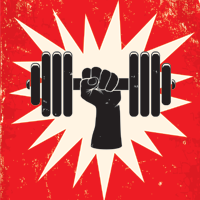Periodization Programs for Strength Training
Often when people work out, especially associates at Reynolds in our on-site gym, they get into a routine they stick to. That is called periodization. Periodization refers to the practice of varying the amount of weight you lift and the number of repetitions you complete during a strength training session. When it comes to resistance training, periodization programs have consistently been shown in research to be superior training programs. So the next time you are on lunch lifting weights, it might be a good idea to mix up the weight and the number of reps you do.
There are three different periodization models that can be followed. They all involve varying the number of reps you perform and the amount of weight you lift by using your repetition maximum (RM). For example, if you are doing a chest press, the program may call for 15 RM. This means you would use as much weight as you can press 15 times, with good form, but no more than that. The three models are:
Linear Periodization: This is probably the most commonly used model. Every few weeks you increase your weight and decrease the number of reps.
- Weeks 1-5: 15 RM
- Weeks 6-10: 12 RM
- Weeks 11-15: 10 RM
Reverse Linear Periodization: Every few weeks you increase your number of reps, but may decrease your weight a bit.
- Weeks 1-4: 10 RM
- Weeks 5-8: 12 RM
- Weeks 9-12: 15 RM
Undulating Periodization: This model involves varying your weight and your reps from day to day.
- Monday: 8 RM
- Wednesday: 6 RM
- Friday: 4 RM
Note: In all three models, any number of sets can be performed based on time and goals.
All three periodization models have proven successful for increasing muscle strength and endurance. Undulating periodization may be a bit superior when it comes to improving strength. However, the basic message is that variety is key! A great approach to strength training is to use all three models and mix them up for ultimate variety.
Muscles respond best when they are exposed to different stimuli: different weights, different movements, and different types of equipment. So keep your muscles guessing and you will keep getting results!
Reynolds and Reynolds is committed to wellness and helping employees develop healthy habits that make them more productive and engaged, both professionally and personally.

















